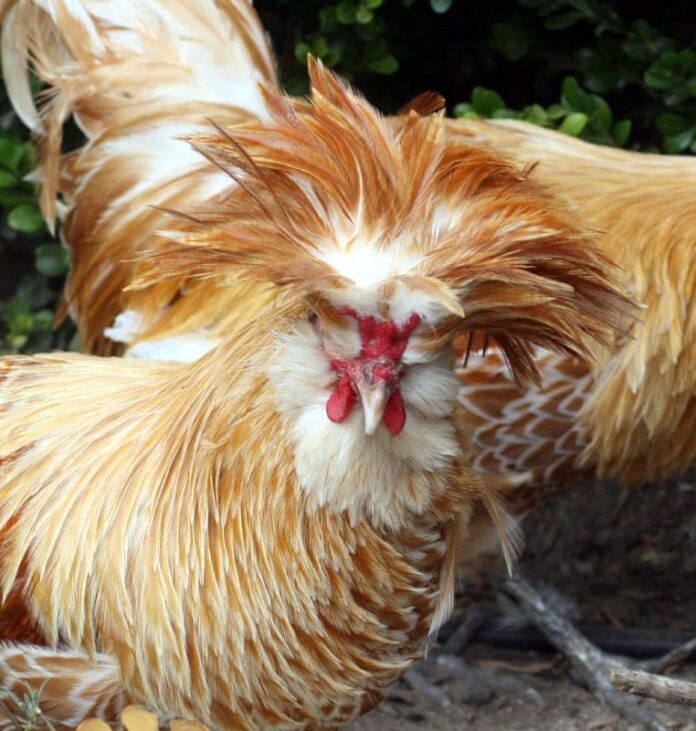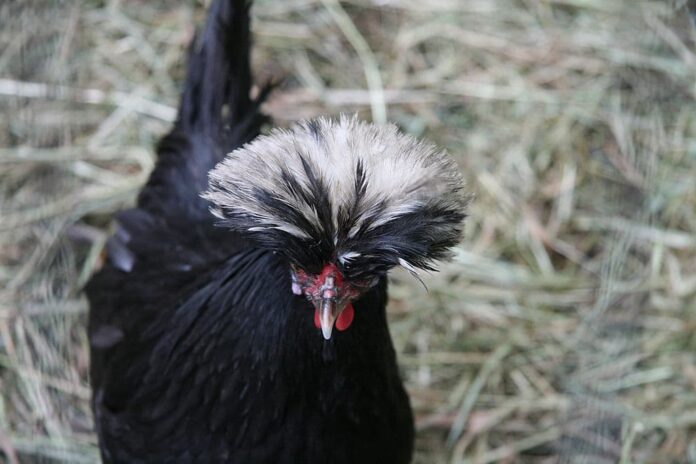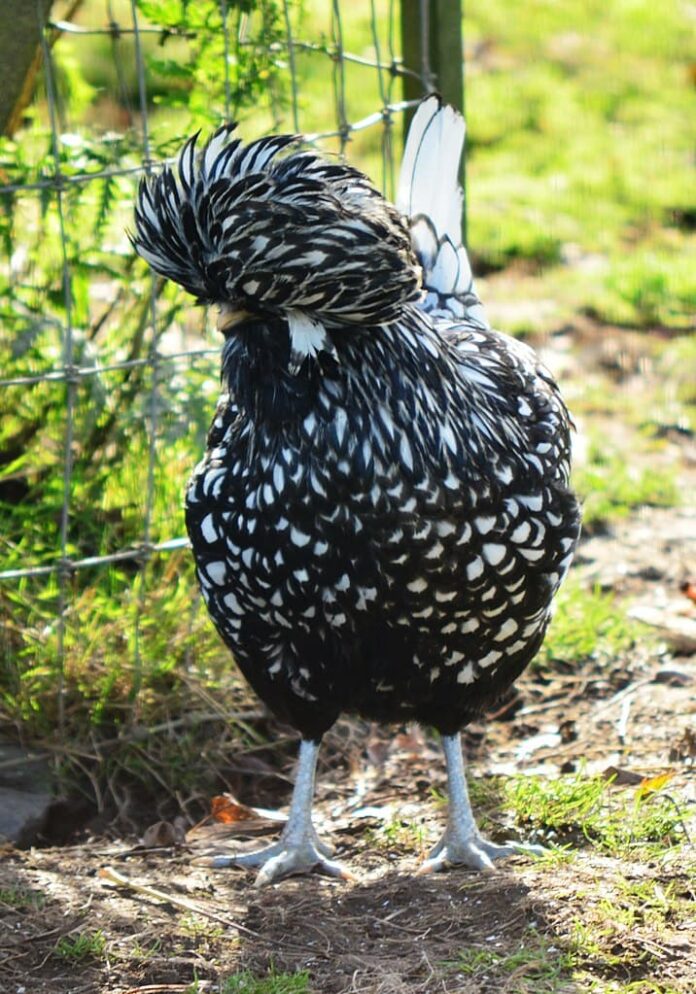Polish chicken is clearly known for their remarkable crest of puffy feathers that give them such a cool look. This poultry is not like other regular chickens you normally see, even their behavior is different from the others. Can you eat them? Yes, but they are more for ornamental purposes because of their unique and fancy appearance. So many interesting things about Polish chicken, feel free to check them out below.
1Appearance

This striking poultry is only around 30 to 38 centimeters tall, and roosters are heavier and larger than hens. They weigh around 2.7kg at most, and they are good flyers so it is common to see them on tree branches. Polish chicken has a slender body with soft and sleek feathers but their gray legs or shanks lack feathers. With the feathers covering almost entirely of the poultry’s head, many people don’t know these chickens also have earlobes and wattles.
The large crest is supported by a bony prominence on its skull, and males and females have different crest appearances. A hen of this species has a tidy pom-pom crest while the rooster has a messy mop of feathers for a crest. The roosters always look like they have a bad hair day while the hens’ crests always look neat. Some varieties even have beards and muffs, and that is one of the features that makes them fascinating. This distinguishing factor is the main reason that no one will ever mistake this for anything else.
2Behavior

Being great pets, Polish chickens are not only calm and friendly but also active and gentle. However, there are a few things to know when it comes to being around them. Now here’s another thing, sometimes the feathers can be so long they fall over the bird’s eyes. That impedes its vision which also makes it easily startled because it cannot see. So it is best to talk to them when you approach them so that they won’t get scared and fly off. The attractive poof on their head is a unique ornament but it also comes with consequences. While the predators can easily spot them, their large crests prevent them from seeing the bird swooping from above. Simply put, they are prone to aerial predation from eagles, hawks, and owls.
3Feeding & Habitats

Polish chickens live mostly in Europe but also Australia and the United States. When it comes to eating, their consumption habits change when the seasons change. They eat less during warmer months, and they eat more in colder months to increase their body heat. Usually, owners give them crumbles, mash, or pallets but mixing chicken feed with grain supplement and nutrients is highly recommended. As for habitats, plenty of space is required if there are multiple individuals. This is to avoid them damaging each other’s crests by picking. Each Polish chicken will require around 4 square feet of space inside the coop. In case there is not enough space inside the coop, then a large outdoor space will do too.
4History
There are old paintings that show that Polish chicken has existed since the 1600s. Despite the name, Poland is not the country that it comes from. Poultry historians believe that this chicken breed comes from the lowlands of Spain. Then they were brought to Holland where the Duct bred various varieties to refine their color and patterns and develop the crests. This poultry goes by quite a few other names such as Paduan chicken and Tophat chicken. In fact, Charles Darwin called any chicken with a crest “crested” chicken or “Polish” chicken. The main reason is the resemblance of the feathering on the bird’s head to the sprouting crest of Polish soldiers’ feather caps.
5Types
Polish chicken comes in various colors with different crests, and they are so stunning to look at. The common colors are black, blue, buff, golden, silver, and white, and some even come with frizzled feathers. Some common Polish chicken varieties are:
Buff Laced
Just like the name suggests, this one has rich golden buff feathers that are neatly laced in creamy white layers. Their shanks and toes are dainty slate blue, and they have huge flowing crests that limit their vision. This breed is actually quite rare, and it has two varieties: bearded and non-bearded. Its remarkable crest is one thing but its docile and gentle nature is another thing that makes it super popular.
Golden
The coloration of this breed is very similar to the domestic chicken but the crest is hard to miss. It is actually the most ornamental among other breeds, I mean, look at that huge crest of feathers. So if you are a fan of large crests, this is the breed you should totally consider.
Silver
The combination of silver-white plumage with lustrous black feathers makes this breed one of a kind. It has a messy crest that resembles closely to human’s morning hair, looking absolutely unique. Not to mention its strong and sturdy build, no doubt why it is among the most popular.
White
Many fanciers and hobbyists are fond of this breed, the Polish chicken with pure white color. The white body and crest along with docile and gentle nature make this breed the perfect pet to have.
White-Crested Black
The mature bird of this breed has a striking contrast in color which looks absolutely magnificent. Its lustrous black body plumage makes its white crest stand out with perfection. Even the little chicks have adorable black bodies with white top hats of little feathers.
Related Post: Things To Know About Dracula Parrots




